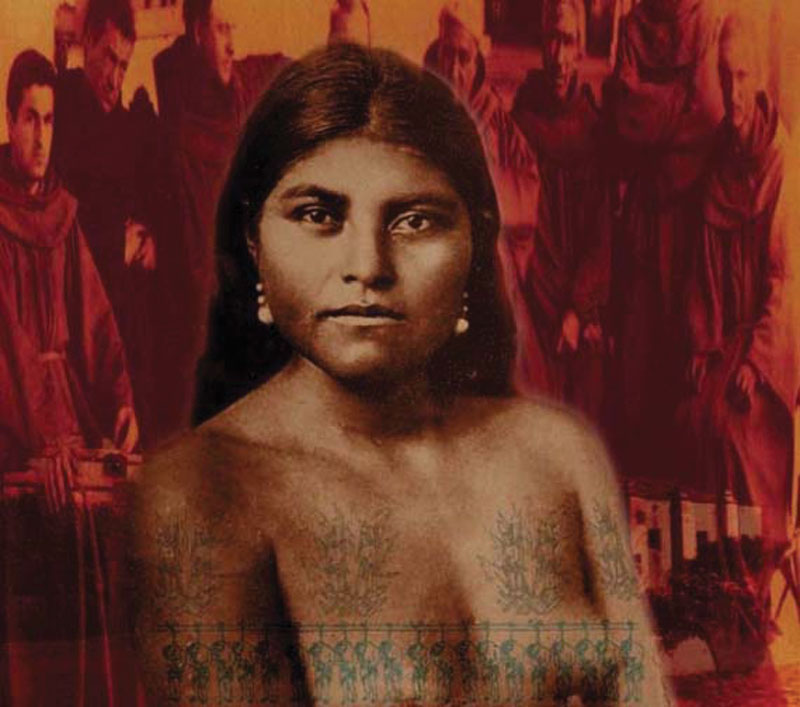
By Emily Clarke
–
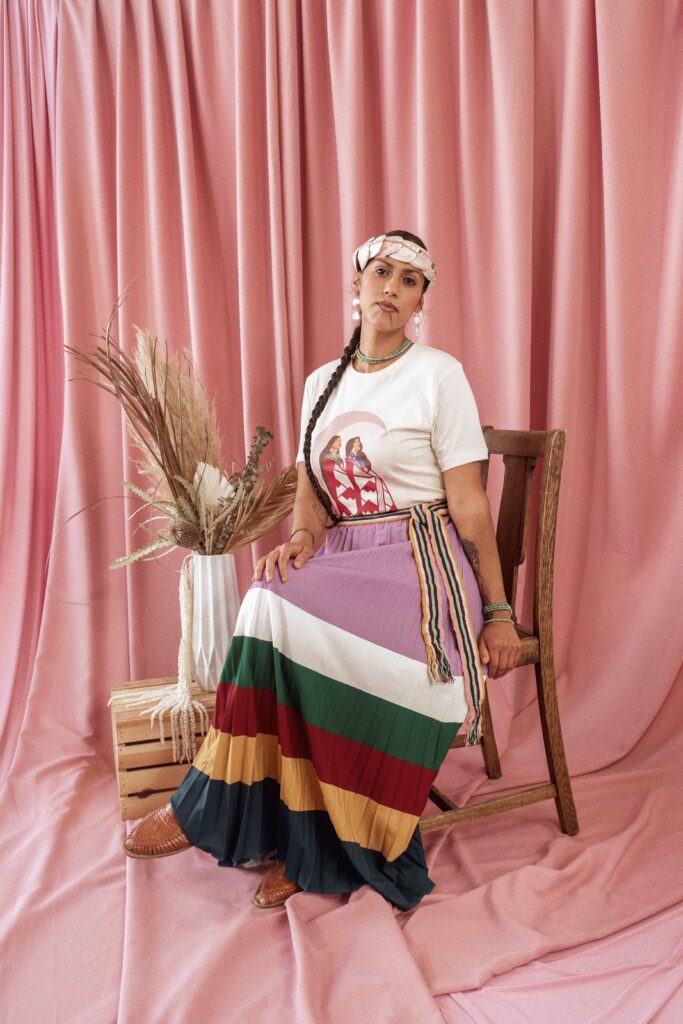
Jessa Calderon (Tongva, Chumash, Yoeme)
Jessa is a songwriter, poet, hip hop artist, performer, hypnotherapist, massage therapist, and an energy worker. She currently serves as the Land, Water, and Climate Justice Director at Sacred Places Institute for Indigenous Peoples. Recently, Jessa became a published author with her new book, SisterHOOD, which is about a group of young girls growing up in the “hood” who support each other at all costs. Jessa dedicates much of the work she does to helping Native communities from across the country express and feel good about themselves. She leads songwriting and poetry workshops, leads guided meditations, and facilitates healing through community and art. In 2022, Jessa became a part of a Tongva-community-based basket weaving group and still dedicates her time to learning the art form and becoming a weaving teacher sometime in the future. Jessa also uses platforms such as her Instagram page to raise awareness for Indigenous issues she is passionate about as well as to share little bits of her life as an Indigenous woman and artist.
–
Anna Sandoval (Kumeyaay)
Anna Sandoval was a college graduate, mother of five, and leader of the Sycuan Band of Mission Indians for two decades (beginning in 1972), during which she helped Sycuan rise from poverty to self-sufficiency through Indian Gaming. Anna’s first step into the gaming industry was the purchase and building of “Sycuan Bingo Palace” in 1983 which grew in both popularity and success for over a decade. Then, the bingo hall was replaced by a large casino which not only made the Sycuan Nation one of the most successful tribes in the Nation, but also one of the largest employers of both Native and non-Native employees within San Diego County. Due to Anna Sandoval’s dedication to the success of her people, Sycuan community members were able to move from wooden houses without running water to family homes where they lived comfortably. However, Anna was not blind to the ways in which financial success affected her community’s values. In fact, in many interviews she is recorded discussing the loss of traditions she felt came with living without hardship. She was a woman who dedicated her life to leading and serving her community, and a woman who recognized the importance of remembering who you are and the culture you come from even when the environment you live in is changing.
–
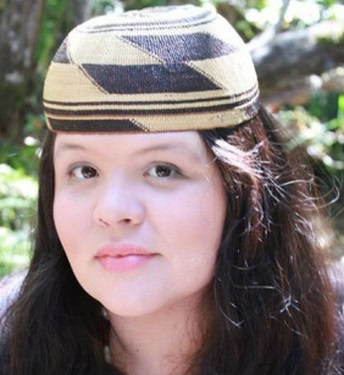
Cutcha Risling Baldy (Hupa, Yurok and Karuk)
Cutcha Risling Baldy is Department Chair of Native American Studies at Cal Poly Humboldt, an author, and founder of Native Women’s Collective, a nonprofit organization that supports the continued revitalization of Native American arts and culture. Cutcha studies and teaches Indigenous Feminism, decolonization, and California Indian history and current peoples. Her first book We Are Dancing For You: Native feminisms and the revitalization of women’s coming-of-age ceremonies, discusses her knowledge of Indigenous feminism, the idea of decolonization, and the revitalization of women’s coming of age ceremonies in her own tribe as well as others. We are Dancing For You also challenges anthropological theories about menstruation and coming of age and addresses gender inequality within Native communities. The nonprofit Cutcha is a founder of, Native Women’s Collective, is dedicated to advancing Native arts, culture, and leadership. Their work includes retreats, demonstrations, and community support focused on the continuation of Native traditions, cultural arts, and generational education. Cutcha grew up practicing her traditional ways and strives to share her knowledge with others.
–
Abby Abinanti (Yurok)
Abby Abinati served as a San Francisco Superior Court Commissioner, is the first California Native to be a member of the State Bar, and now serves as the Chief Justice of the Yurok tribe. She is an advocate for restorative justice and practices Native law based on a set of values, rather than rights, like the American justice system. Like Morning Star Gali, Abby Abinanti’s work often focuses on the unfair treatment of Native peoples in the California justice system, mass incarceration of Indigenous people, and mass criminalization of people of color. In an article from The National Judicial College, Abby says that three tribal elders, all women, gave her no choice but to go to law school. She was the only tribal member graduating, and the elders saw a need within their community for someone like Abby. She serves her position with humor, empathy, and a deep understanding of her people. Abby has created space for Native women studying law, helped make a name for tribal court systems, and implemented restorative justice practices within her own tribe. You can learn more about “Judge Abby” through the documentary, “Tribal Justice.”
–
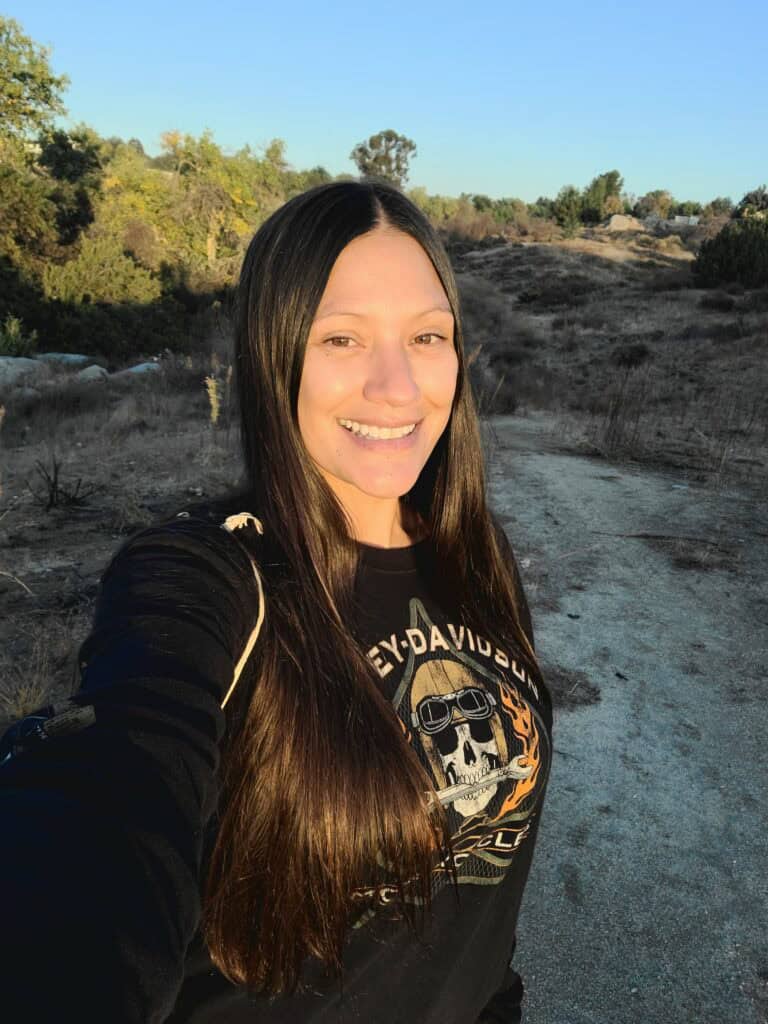
Blossom Maciel (Enrolled Fort Sill Chiricahua Apache, Mountain Cahuilla descendant)
Blossom Maciel began volunteer teaching basketry and other cultural arts at the young age of 19 but overtime grew her teaching practice to include cultural outreach at elementary schools, museums, culture centers and other public and private organizations. One of Blossom’s passions is teaching kids about Native culture because she recognizes that much of the knowledge she shares will stick with them as they grow into adults. Over the years, Blossom’s workshops have evolved from just basketry to focus more on plants, plant medicine, native traditional foods and how to keep connected with these ways in our everyday lives, and she now works mainly with tribal organizations and individual tribes. Blossom attributes much of her knowledge and power as an Indigenous woman to the things she learned from women in her family such as her mother Lorene Sisquoc, and to important women within the local Native community including Cindy Alvitre and Barbara Drake. In turn, she hopes that her daughters, Ajila and Walela, will continue the path laid out to them by their ancestors. You can keep up with Blossom’s work on her Instagram page.
–
Dorothy Ramon (Serrano)
Dorothy Ramon was known as the last “pure” speaker of the Serrano language, meaning she was the last person who was fully fluent. The Serrano language, once spoken across a wide portion of the state of California, was greatly lost in the 1980s due to colonization and assimilation, therefore Dorothy Ramon remained one of the last fluent speakers. The history and traditions of the Serrano people are greatly reflected in the language, therefore much of the cultural practices of the Serrano were lost due to the loss of the language. Dorothy spoke the language often in order to preserve it as well as the traditions of her people. As a tribal elder, Dorothy was dedicated to the preservation and passing down of cultural knowledge and traditions. Today, she represents traditional values, the importance of tribal language preservation, and the Indigenous tradition of the sharing and passing down of knowledge. The Dorothy Ramon Learning Center was created in her honor and strives to put the values Dorothy represents into practice.
–
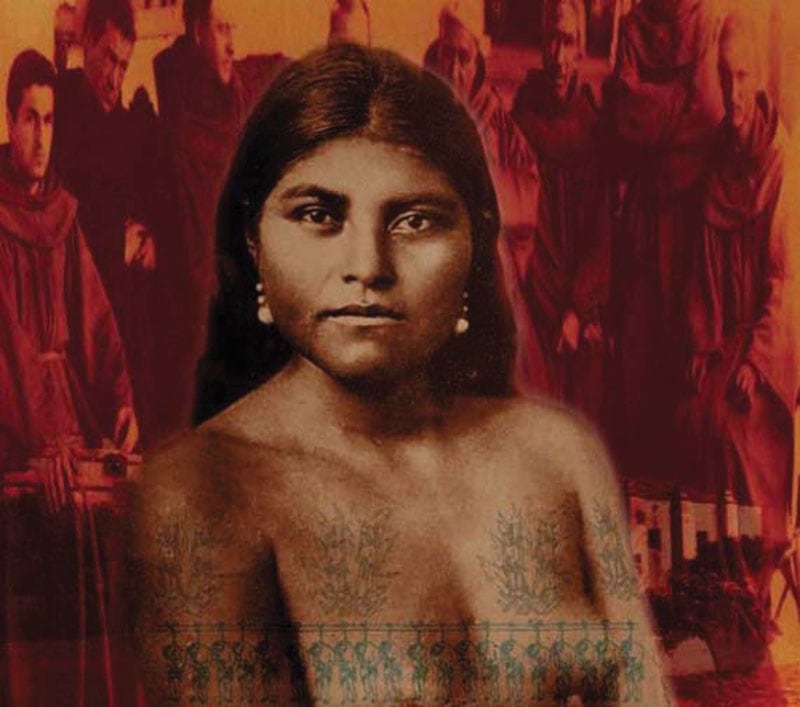
Toypurina (Gabrieleño)
Toypurina was a Gabrieleño medicine woman who is best known for her involvement in the 1785 planned revolt against Spanish rule. During the time in which Toypurina lived, the California Mission system was in full force; exploiting Indigenous people for physical labor, forcing them to abandon their cultural practices and beliefs, and using religion to justify sexual and physical violence. In 1785, when Toypurina became involved in the revolt against the mission system (specifically Mission San Gabriel), over one thousand Natives had been assimilated. Toypurina believed in tribal sovereignty as well as the right for tribal people to practice their cultural traditions, so she proudly joined the revolt and served as an important leader. It is said that Toypurina used her powers as a medicine woman to influence and immobilize Catholic priests while other members in the revolt eliminated soldiers. The Spanish saw Toypurina as a seductress and sorceress, not uncommon with their view of California Native Women as a whole as “sinful.” Sadly, the 1785 revolt ultimately failed and ended in the imprisonment and exile of Toypurina, however, she went down in history as an Indigenous woman who used her sense of community, justice, and spirituality to stand up for Native people and culture during a time when being Native was considered a sin.
–
Corrina Gould (Ohlone)
Corrina Gould is the chair and spokesperson for the Confederated Villages of Lisjan, the Co-Director for The Sogorea Te’ Land Trust, and lead organizer for Indian People Organizing for Change. Corrina’s work supports the idea of rematriation; Indigenous women-led restoration of the relationships between Native peoples and mother earth. Corrina has worked to preserve her traditional tribal burial grounds for years, and through this work, has created relationships with various tribal organizations as well as created her own. One of them, The Sogorea Te’ Land Trust, recently joined forces with the city of Oakland to return portions of land to the care of local Indigenous people. Additionally, Corrina is known as a tribal leader who fights for tribal sovereignty and the protection and preservation of sacred land. Corrina’s work is a beautiful example of what land acknowledgment looks like when you put it to action, and her dedication to her people and the environment is powerful.
–
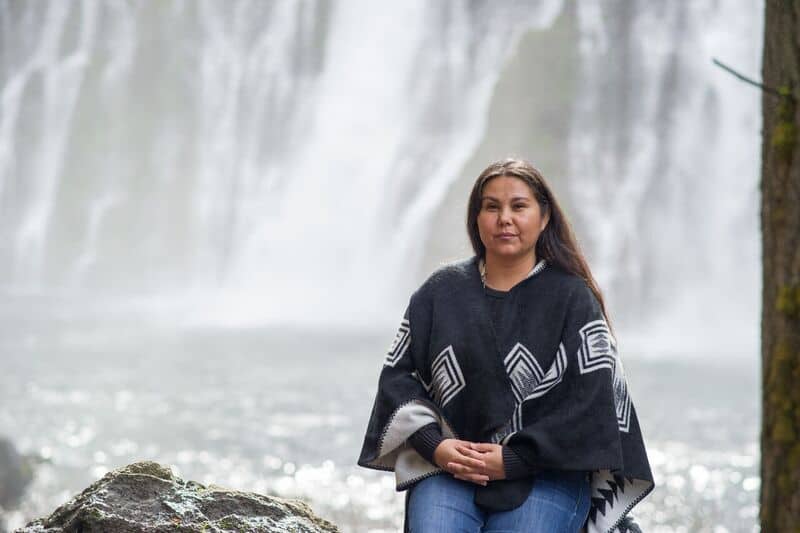
Morning Star Gali (Pit River)
Morning Star Gali began participating in Native activism within the San Francisco Bay area at a very young age. Morning Star is also the California Tribal and Community Liaison for the International Indian Treaty Council. Her father, the first full-time Native prison chaplain for the California Department of Corrections and Rehabilitation, was an advocate for incarcerated Natives, and now Morning Star is doing similar work. Morning Star’s work to document, study, and raise awareness of the effect of mass incarceration on the Native community is no less than groundbreaking. In fact, The Bureau of Justice only began keeping data on incarcerated Indigenous peoples in 2006, therefore showing how much Morning Star’s work is needed. Due to her experience working with incarcerated Natives, Morning Star is also an advocate for traditional healing practices as well as the implementation of tribal courts. Morning Star sees the connection between Reservations and Boarding Schools in U.S. history and the current mass incarceration of Indigenous peoples, therefore she understands the importance of understanding intergenerational trauma within Native communities.
–
Ramona Lubo (Cahuilla)
Ramona Lubo was a Cahuilla woman born in 1853. Known widely for being the inspiration of the Helen Hunt Jackson novel, Ramona, and the main character of the Ramona Bowl Pageant, Ramona is known for her tragic life story that was later romanticized in these controversial forms of media. However, Ramona is also known as an extremely talented basket weaver whose work is featured in museums such as the Smithsonian. Historically, Ramona’s baskets (and Ramona herself) became a sort of tourist attraction for non-Native readers of the Jackson novel. Much of her work was sold to or stolen by non-Natives who romanticized her tragic life in order for Ramona to feed herself and her son. Due to this, Ramona’s family owns just one basket of hers. However, despite her heartbreaking life story, Ramona’s work helped make a name for Cahuilla women and Cahuilla basketry both throughout history and still to this day. Her popular “star” basket design is said to mimic the five-pointed tobacco flower, a sacred plant used for prayer and ceremony in Cahuilla culture. Ramona herself represents the hard-working, dedicated, and resilient nature of Cahuilla people and reminds us the importance of carrying on tradition.
–

Alice Piper (Paiute)
Alice Piper was a Paiute woman who, along with six other Native teenagers, was denied entry into Big Pine High School in 1923 due to being Native American. After being denied enrollment, Alice made history by suing the Big Pine School District in 1924 and winning. The case allowed Native students to enroll in the newly built highschool as well as set precedent for a later trial that deemed racially segregated schools unconstitutional. Before the court case, Alice attended a governmental boarding school implemented to assimilate Native children and erase Native culture. The court ultimately deemed the quality of the boarding school Alice and her classmates were attending much less than that of public school, therefore, due to Alice’s determination, the integration of Native students into the California public school system began. Although California Natives and the education system have a tough past, Alice’s case was a monumental step in the perusal of equal education opportunities for Native people.
–
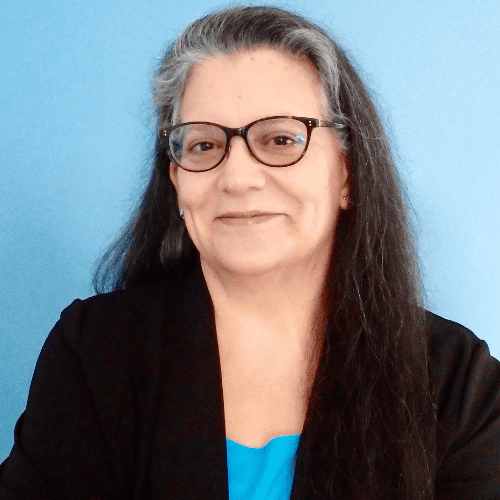
Deborah A. Miranda (Esselen, Chumash)
Deborah A. Miranda is a poet, memoirist, essayist, and scholar. She is the author of Bad Indians, a mixed-media memoir about California Indian History both past and present. Bad Indians was a winner of the PEN Oakland–Josephine Miles Literary Award as well as a winner of the 2014 Independent Publisher Book Award. Deborah Miranda is also the author of four poetry collections, a former English and Creative Writing professor at Washington and Lee University, and an advocate for teaching young students the real history of the United States. In fact, it was her son’s experience of learning about the California Mission System in fourth grade that guided her in the writing of Bad Indians. As an author, Deborah doesn’t mince words or sugarcoat history. She tells stories bluntly; in the way they need to be told, and in a way that makes Native people proud to read her work.

